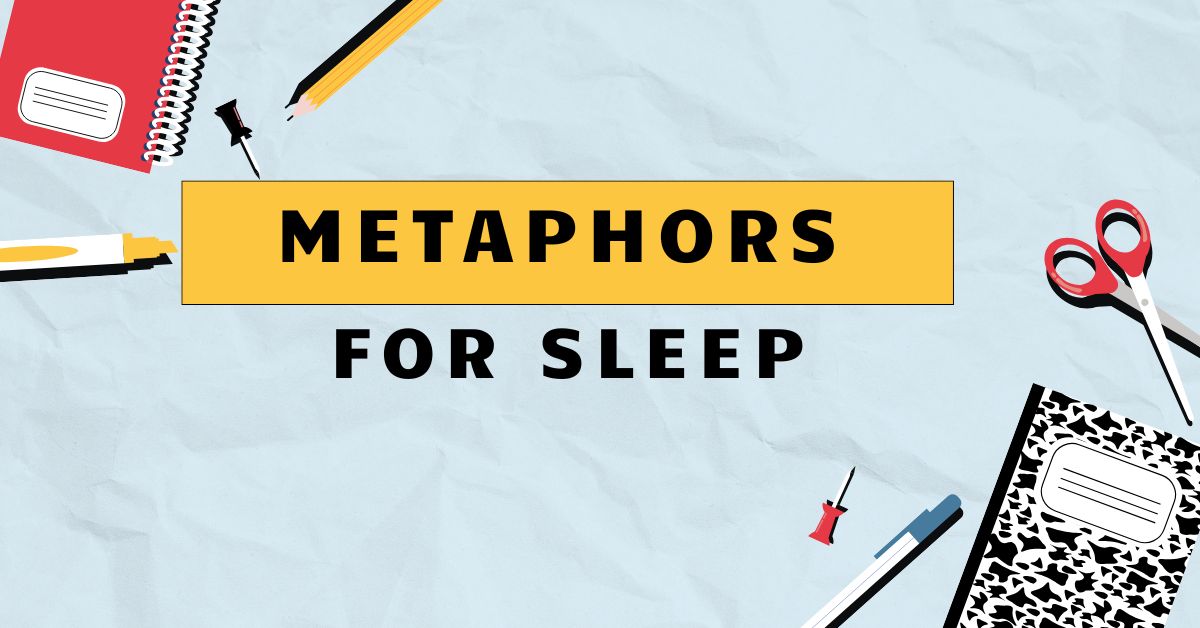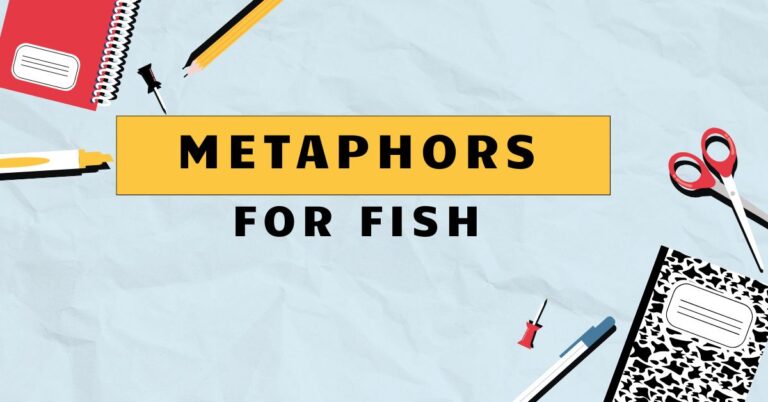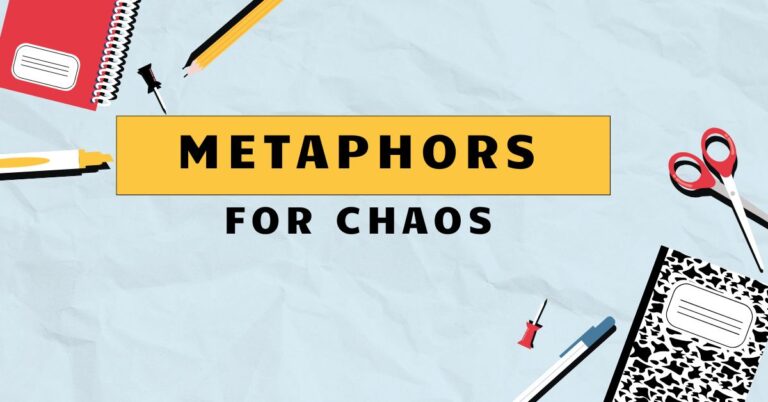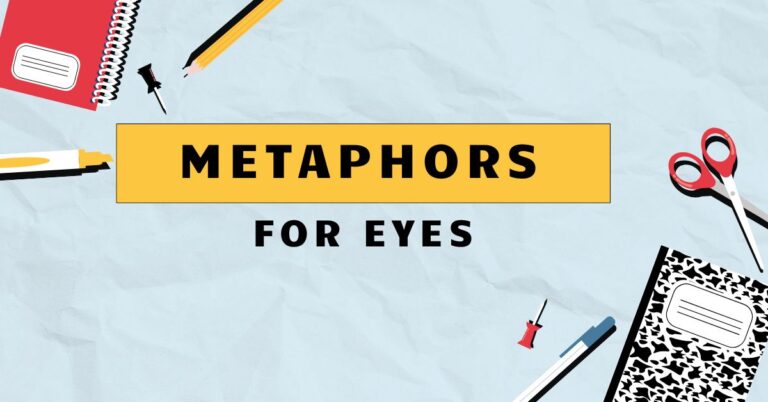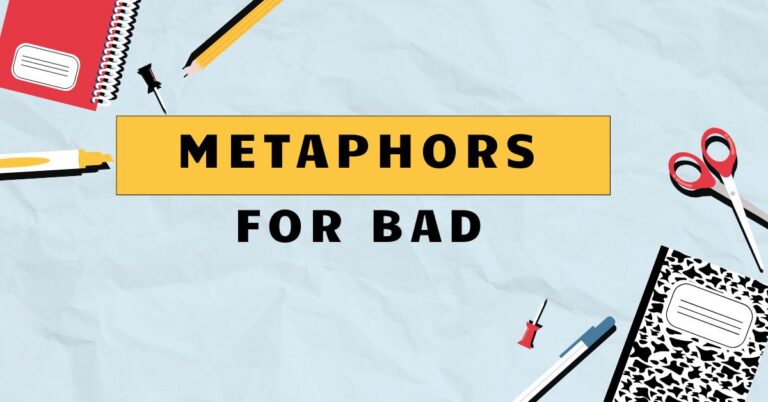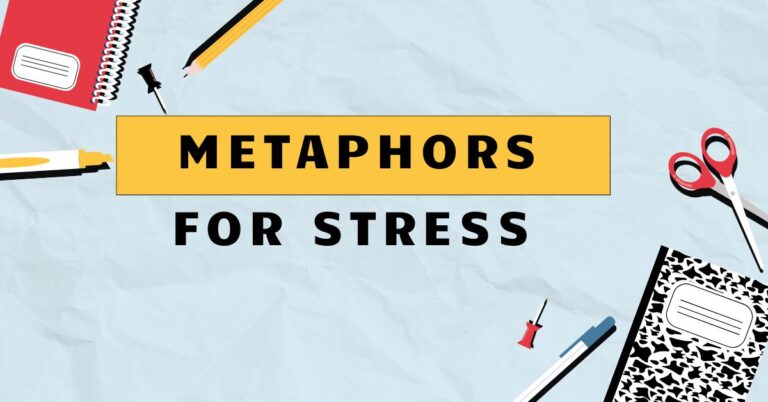40 Metaphors for Sleep: A Comprehensive Guide
Sleep, a fundamental human need, is often described using metaphors that paint vivid pictures of its nature and effects. Understanding these metaphors enhances our comprehension of figurative language and adds depth to our communication.
This article explores the rich landscape of metaphors for sleep, examining their structure, types, and usage. This guide is beneficial for English language learners, writers, and anyone interested in exploring the creative use of language to describe a universal experience.
By diving into the nuances of these metaphors, readers will gain a deeper appreciation for the artistry of language and improve their ability to both understand and employ figurative expressions effectively. This exploration also sharpens critical thinking skills, as interpreting metaphors requires understanding implicit meanings and cultural contexts.
Ultimately, mastering metaphors for sleep enriches one’s linguistic toolkit, making communication more expressive and engaging.
Table of Contents
- Introduction
- Definition of Metaphor for Sleep
- Structural Breakdown of Sleep Metaphors
- Types of Sleep Metaphors
- Examples of Sleep Metaphors
- Usage Rules for Sleep Metaphors
- Common Mistakes with Sleep Metaphors
- Practice Exercises
- Advanced Topics in Sleep Metaphors
- Frequently Asked Questions
- Conclusion
Definition of Metaphor for Sleep
A metaphor for sleep is a figure of speech that describes sleep by comparing it to something else, without using “like” or “as.” It implies a similarity between sleep and the object or concept to which it is compared. Metaphors for sleep are powerful tools that create vivid imagery and convey deeper meanings about the nature, experience, and significance of sleep.
These metaphors enrich our understanding of sleep by drawing parallels to relatable concepts.
Classification:Metaphors for sleep fall under the broader category of figurative language, specifically classified as conceptual metaphors. Conceptual metaphors are underlying cognitive frameworks that shape how we understand abstract concepts like sleep in terms of more concrete experiences.
For instance, the common metaphor “sleep is a journey” reflects a conceptual understanding of sleep as a process with a beginning, middle, and end.
Function:The primary function of sleep metaphors is to enhance communication by making abstract ideas more accessible and engaging. They allow writers and speakers to convey complex emotions and experiences related to sleep in a concise and impactful way.
Metaphors can also evoke certain moods or feelings, such as peace, tranquility, or even fear, depending on the specific comparison used.
Contexts:Metaphors for sleep are used in various contexts, including literature, poetry, everyday conversation, and even scientific writing. In literature and poetry, they are often employed to create evocative imagery and explore themes of mortality, escape, and renewal.
In everyday conversation, they can be used to express feelings of exhaustion or the desire for rest. Even in scientific contexts, metaphors can help researchers and the public understand complex sleep processes.
Structural Breakdown of Sleep Metaphors
The structure of a sleep metaphor typically involves two key elements: thetenorand thevehicle. The tenor is the subject being described (in this case, sleep), while the vehicle is the object or concept to which sleep is being compared.
The metaphor works by highlighting shared characteristics between the tenor and the vehicle.
For example, in the metaphor “Sleep is a deep well,” the tenor is sleep, and the vehicle is a deep well. The shared characteristic is the sense of depth, mystery, and potential for immersion.
This metaphor suggests that sleep is a profound and perhaps unknowable state that one can sink into.
Understanding the structural elements of a metaphor allows us to analyze its meaning and effectiveness. By identifying the tenor and the vehicle, we can better understand the intended comparison and the underlying message being conveyed.
This analytical approach is crucial for both interpreting and creating compelling metaphors for sleep.
Furthermore, the effectiveness of a sleep metaphor depends on the audience’s familiarity with the vehicle. A metaphor that relies on an obscure or unfamiliar concept may not resonate with the intended audience.
Therefore, it is important to choose vehicles that are widely understood and culturally relevant.
Types of Sleep Metaphors
Metaphors for sleep can be categorized based on the specific aspects of sleep they emphasize and the types of comparisons they make. Here are some common categories:
Sleep as a Journey
This type of metaphor portrays sleep as a voyage or expedition, often emphasizing the transition into and out of sleep. It can highlight the sense of exploration, discovery, or even danger associated with the dream world.
Sleep as Death or Oblivion
These metaphors draw parallels between sleep and death, emphasizing the cessation of consciousness and the sense of nothingness. While potentially unsettling, they can also convey a sense of peace and release.
Sleep as a Personified Entity
This category involves personifying sleep, treating it as a living being with its own intentions and actions. This can create a sense of intimacy or even conflict with sleep.
Sleep as an Escape
These metaphors focus on sleep as a means of escaping from the stresses and burdens of daily life. They emphasize the restorative and rejuvenating aspects of sleep.
Sleep as Restoration
This type of metaphor highlights sleep’s ability to heal and revitalize the body and mind. It emphasizes the importance of sleep for physical and mental well-being.
Examples of Sleep Metaphors
Here are some examples of sleep metaphors, categorized by type, to illustrate the diverse ways in which sleep can be described figuratively:
Table 1: Sleep as a Journey
This table provides examples of how sleep can be portrayed as a journey, with each metaphor emphasizing different aspects of the transition into and out of sleep, as well as the experiences within the dream world.
| Metaphor | Explanation |
|---|---|
| Sleep is a long voyage to a distant shore. | Implies that sleep is a lengthy and transformative experience, taking one far away from their waking reality. |
| He embarked on a nightly journey into the land of Nod. | “Land of Nod” is a traditional euphemism for sleep, suggesting a journey to a mythical place of rest. |
| She drifted into a sea of dreams. | Suggests a gentle and fluid transition into sleep, with dreams being vast and boundless like the ocean. |
| Sleep is a winding path through the forest of the subconscious. | Portrays sleep as a complex and unpredictable journey through the hidden depths of the mind. |
| He sailed away on the ship of slumber. | “Ship of slumber” evokes a sense of peaceful travel and escape into the realm of sleep. |
| The mind takes flight each night, soaring through celestial realms. | Emphasizes the freedom and expansiveness of the dream experience, as if the mind were unburdened by earthly constraints. |
| Falling asleep is like descending a staircase into darkness. | Describes the gradual and often unsettling transition into unconsciousness. |
| He navigated the treacherous currents of REM sleep. | Highlights the intense and sometimes chaotic nature of rapid eye movement sleep, when vivid dreams occur. |
| She found herself lost in the labyrinth of her dreams. | Suggests a confusing and disorienting dream experience, where one struggles to find their way. |
| Sleep is a pilgrimage to the temple of tranquility. | Portrays sleep as a sacred and restorative journey, leading to inner peace and calm. |
| Each night, he journeys to the moonlit shores of sleep. | Creates a romantic and ethereal image of sleep, associating it with beauty and serenity. |
| She traveled through the shifting sands of her subconscious. | Emphasizes the ever-changing and unpredictable nature of dreams. |
| Sleep is a trek through the wilderness of the mind. | Suggests a challenging and potentially dangerous journey, where one confronts their deepest fears and desires. |
| He embarked on a quest for the mythical sleep dragon. | Introduces an element of fantasy and adventure, portraying sleep as a goal to be achieved. |
| She rowed her boat into the misty harbor of sleep. | Evokes a sense of peaceful arrival and sanctuary after a long day. |
| Sleep is a space odyssey to the unexplored planets of the imagination. | Highlights the boundless potential for creativity and discovery within the dream world. |
| He traversed the dreamscape, a vast and ever-changing terrain. | Emphasizes the immersive and surreal nature of dreams. |
| She wandered through the enchanted forest of her slumber. | Creates a magical and whimsical image of sleep, filled with wonder and enchantment. |
| Sleep is a deep dive into the ocean of the unconscious. | Suggests a profound and potentially overwhelming experience, where one confronts hidden emotions and memories. |
| He set sail on the midnight voyage to dreamland. | Another variation of sleep as a journey. |
| She embarked on a spiritual retreat into the night. | Emphasizes the restorative and healing aspects of sleep. |
| Sleep is a cross-country road trip through the mind. | Portrays sleep as a long and varied journey, with many different sights and experiences along the way. |
| He followed the winding river of sleep to its source. | Suggests a quest for the ultimate understanding of sleep and consciousness. |
Table 2: Sleep as Death or Oblivion
These metaphors draw a parallel between sleep and death, often used to convey the sense of deep unconsciousness and the temporary cessation of awareness.
| Metaphor | Explanation |
|---|---|
| Sleep is a little death. | Highlights the temporary cessation of consciousness and activity during sleep. |
| He surrendered to the embrace of oblivion. | Suggests a complete loss of awareness and a merging with nothingness. |
| She descended into the silent tomb of sleep. | Evokes a sense of darkness, stillness, and isolation. |
| Sleep is the great leveler, where all are equal in their unconsciousness. | Emphasizes the universality of sleep and its ability to erase social distinctions. |
| He entered the void of slumber. | Portrays sleep as an empty and undefined space. |
| She dissolved into the nothingness of sleep. | Suggests a complete loss of identity and a merging with the void. |
| Sleep is a temporary cessation of being. | Highlights the interruption of conscious experience during sleep. |
| He faded into the inky blackness of slumber. | Evokes a sense of darkness and mystery. |
| She found solace in the quiet grave of sleep. | Suggests that sleep can provide respite from the troubles of life. |
| Sleep is the ultimate surrender. | Emphasizes the loss of control and the acceptance of unconsciousness. |
| He drifted into the abyss of unconsciousness. | Portrays sleep as a deep and potentially frightening void. |
| She was swallowed by the darkness of sleep. | Suggests a complete and perhaps overwhelming loss of awareness. |
| Sleep is the great eraser, wiping away the day’s worries. | Emphasizes the ability of sleep to cleanse the mind and body. |
| He succumbed to the silent embrace of Morpheus. | Morpheus is the Greek god of dreams, suggesting a surrender to the power of dreams. |
| She entered the land of shadows, where all is forgotten. | Evokes a sense of mystery and the loss of memory. |
| Sleep is a brief respite from the burdens of existence. | Highlights the temporary relief that sleep provides. |
| He was lost in the boundless expanse of nothingness. | Emphasizes the lack of awareness during deep sleep. |
| She found peace in the empty chambers of her mind. | Suggests that sleep can provide a sense of inner calm and tranquility. |
| Sleep is a return to the primordial darkness. | Evokes a sense of returning to a state of non-existence. |
| He slipped into the silent kingdom of slumber. | Another variation of sleep as a journey. |
| She embraced the sweet oblivion of sleep. | Emphasizes the pleasurable aspects of unconsciousness. |
| Sleep is a temporary escape from the self. | Portrays sleep as a way to transcend the limitations of individual identity. |
| He vanished into the mists of unconsciousness. | Suggests a gradual and mysterious disappearance. |
Table 3: Sleep as a Personified Entity
These metaphors personify sleep, treating it as a living being with its own intentions and actions.
| Metaphor | Explanation |
|---|---|
| Sleep crept up on him like a thief in the night. | Portrays sleep as a stealthy and unwelcome intruder. |
| Sleep beckoned her with open arms. | Suggests that sleep is inviting and comforting. |
| Sleep wrestled with him, trying to pull him under. | Emphasizes the struggle to fall asleep. |
| Sleep cradled her in its gentle embrace. | Portrays sleep as a nurturing and protective force. |
| Sleep abandoned him, leaving him restless and agitated. | Suggests that sleep is a fickle and unreliable companion. |
| Sleep whispered secrets in her ear. | Evokes a sense of mystery and the power of dreams. |
| Sleep held him captive in its dreamlike realm. | Highlights the immersive and potentially disorienting nature of dreams. |
| Sleep played tricks on her, conjuring strange and unsettling images. | Portrays sleep as a mischievous and unpredictable entity. |
| Sleep guarded the gates of the dream world. | Suggests that sleep is a gatekeeper to a realm of fantasy and imagination. |
| Sleep rewarded him with blissful dreams. | Emphasizes the positive and restorative aspects of sleep. |
| Sleep teased her with fleeting glimpses of forgotten memories. | Portrays sleep as a tantalizing and elusive force. |
| Sleep tormented him with nightmares. | Suggests that sleep can be a source of fear and anxiety. |
| Sleep wrapped its arms around him, stifling his thoughts. | Emphasizes the silencing effect of sleep on the conscious mind. |
| Sleep danced with her, leading her through a surreal and dreamlike waltz. | Evokes a sense of beauty and enchantment. |
| Sleep whispered promises of peace and tranquility. | Suggests that sleep can provide respite from the troubles of life. |
| Sleep seduced him with its siren song. | Portrays sleep as an irresistible and potentially dangerous temptation. |
| Sleep stole his energy, leaving him drained and exhausted. | Emphasizes the depleting effects of lack of sleep. |
| Sleep offered her a sanctuary from the storm of life. | Suggests that sleep can provide a refuge from stress and turmoil. |
| Sleep flirted with him, appearing and disappearing at will. | Portrays sleep as an elusive and unpredictable presence. |
| Sleep embraced him, erasing the worries of the day. | Emphasizes the cleansing and restorative power of sleep. |
| Sleep whispered tales of wonder to her attentive mind. | Highlights the creative and imaginative potential of dreams. |
| Sleep challenged him with riddles wrapped in symbolism. | Portrays dreams as a source of insight and self-discovery. |
Table 4: Sleep as Escape
This table illustrates metaphors focusing on sleep as an escape from the burdens of daily life, emphasizing its restorative and rejuvenating qualities.
| Metaphor | Explanation |
|---|---|
| Sleep is a refuge from the storm. | Suggests that sleep provides a safe haven from the stresses and challenges of life. |
| He escaped into the sanctuary of sleep. | Emphasizes the protective and restorative nature of sleep. |
| She sought solace in the arms of Morpheus. | Morpheus, the Greek god of dreams, symbolizes the comfort and escape found in sleep. |
| Sleep is a temporary reprieve from reality. | Highlights the ability of sleep to provide a break from the demands of everyday life. |
| He retreated into the world of dreams. | Portrays sleep as a portal to a different and often more pleasant reality. |
| She found freedom in the boundless realm of slumber. | Suggests that sleep allows one to escape the limitations of physical and mental constraints. |
| Sleep is a vacation for the mind. | Emphasizes the restorative and rejuvenating benefits of sleep. |
| He hid from his troubles in the darkness of sleep. | Portrays sleep as a hiding place from the problems of life. |
| She sought liberation in the surrender to sleep. | Suggests that sleep allows one to release control and find peace. |
| Sleep is a portal to another dimension. | Emphasizes the transformative and otherworldly nature of dreams. |
| He fled from the pressures of the day into the quiet of night. | Portrays sleep as an escape from the demands and anxieties of daily life. |
| She sought anonymity in the faceless crowd of dreamers. | Suggests that sleep allows one to escape the scrutiny and judgment of others. |
| Sleep is a shield against the arrows of misfortune. | Emphasizes the protective and resilience-building qualities of sleep. |
| He found respite from his pain in the numbness of sleep. | Portrays sleep as a temporary escape from physical or emotional suffering. |
| She sought refuge from the world in the embrace of sleep. | Suggests that sleep provides a sanctuary from the harsh realities of life. |
| Sleep is a bubble that isolates you from the noise and chaos. | Emphasizes the protective and isolating qualities of sleep. |
| He escaped the confines of his body in the weightlessness of sleep. | Portrays sleep as a way to transcend physical limitations. |
| She sought sanctuary from her thoughts in the stillness of sleep. | Suggests that sleep allows one to quiet the mind and find inner peace. |
| Sleep is a fortress against the worries of the world. | Emphasizes the protective and secure nature of sleep. |
| He found freedom from his responsibilities in the dreamscape of sleep. | Portrays sleep as a way to escape the burdens and obligations of daily life. |
Table 5: Sleep as Restoration
The following metaphors highlight sleep’s ability to heal and revitalize the body and mind, emphasizing its importance for overall well-being.
| Metaphor | Explanation |
|---|---|
| Sleep is a balm for the weary soul. | Suggests that sleep soothes and heals emotional wounds. |
| He recharged his batteries with a night of restful sleep. | Emphasizes the ability of sleep to replenish energy levels. |
| She healed her body and mind in the embrace of sleep. | Portrays sleep as a restorative and rejuvenating force. |
| Sleep is a fountain of youth. | Suggests that sleep helps to maintain health and vitality. |
| He mended his broken spirit in the quiet of slumber. | Emphasizes the ability of sleep to heal emotional pain. |
| She nourished her brain with the nutrients of sleep. | Suggests that sleep is essential for cognitive function. |
| Sleep is a reset button for the mind. | Emphasizes the ability of sleep to clear away mental clutter. |
| He replenished his strength with a night of deep sleep. | Portrays sleep as a source of physical renewal. |
| She rejuvenated her senses in the dream world. | Suggests that sleep enhances sensory perception. |
| Sleep is a medicine for the mind. | Emphasizes the therapeutic benefits of sleep. |
| He sharpened his focus with a night of undisturbed sleep. | Portrays sleep as essential for cognitive clarity. |
| She revitalized her creativity in the realm of dreams. | Suggests that sleep enhances artistic expression. |
| Sleep is a spa treatment for the soul. | Emphasizes the relaxing and pampering qualities of sleep. |
| He restored his balance with a night of peaceful slumber. | Portrays sleep as essential for emotional equilibrium. |
| She refreshed her perspective in the morning light after sleep. | Suggests that sleep allows one to see things in a new light. |
| Sleep is a wellspring of vitality. | Emphasizes the life-giving properties of sleep. |
| He renewed his commitment to life in the dawn after sleep. | Portrays sleep as a way to reconnect with one’s purpose. |
| She rebuilt her confidence in the sanctuary of sleep. | Suggests that sleep enhances self-esteem. |
| Sleep is a bridge to a better tomorrow. | Emphasizes the hope and optimism that sleep provides. |
| He strengthened his resolve with a night of empowering dreams. | Portrays sleep as a source of inner strength. |
Usage Rules for Sleep Metaphors
When using metaphors for sleep, consider the following rules to ensure clarity and effectiveness:
- Relevance: The vehicle should have a clear and logical connection to sleep. The comparison should be easily understood and resonate with the audience.
- Originality: While common metaphors can be effective, strive for originality to create a more impactful and memorable image.
- Consistency: Maintain consistency in the metaphor throughout the text. Avoid mixing metaphors that create conflicting or confusing images.
- Context: Consider the context in which the metaphor is used. The tone and style of the writing should align with the chosen metaphor.
- Audience: Tailor the metaphor to the intended audience. Consider their background, knowledge, and cultural understanding.
Exceptions and Special Cases:
While these rules provide a general guideline, there are exceptions and special cases to consider. For example, in poetry or creative writing, a more abstract or unconventional metaphor may be appropriate.
However, in more formal or technical writing, clarity and precision are paramount.
Common Mistakes with Sleep Metaphors
Here are some common mistakes to avoid when using metaphors for sleep:
- Mixed Metaphors: Combining two or more metaphors that create a confusing or illogical image.
- Incorrect: “He sailed away on the ship of slumber, only to be swallowed by the darkness of sleep.” (Mixing the journey and death metaphors)
- Correct: “He sailed away on the ship of slumber, hoping to reach the shores of tranquility.”
- Clichéd Metaphors: Using overused or predictable metaphors that lack originality and impact.
- Clichéd: “Sleep is a blanket.”
- Improved: “Sleep is a weighted blanket, easing the anxieties of the day.”
- Inappropriate Tone: Using a metaphor that is inconsistent with the overall tone or style of the writing.
- Inappropriate: (In a scientific paper) “Sleep is like a magical unicorn that prances through your brain.”
- Appropriate: (In a scientific paper) “Sleep is a critical period for neural consolidation.”
- Lack of Clarity: Using a metaphor that is too obscure or abstract for the audience to understand.
- Unclear: “Sleep is a fractal iteration of the self.”
- Clearer: “Sleep is a mirror reflecting the hidden facets of our minds.”
Practice Exercises
Test your understanding of sleep metaphors with these exercises:
Exercise 1: Identify the Metaphor
Identify the metaphor in each sentence and explain its meaning.
| # | Sentence | Answer |
|---|---|---|
| 1 | Sleep is a golden chain that ties health and our bodies together. | Sleep is a golden chain: Sleep is essential for connecting and maintaining physical health. |
| 2 | He dove into the deep well of sleep. | Sleep is a deep well: Suggests a profound and immersive experience. |
| 3 | She found refuge in the sanctuary of slumber. | Sleep is a sanctuary: Sleep offers protection and peace. |
| 4 | Sleep is the sweet balm for the weary mind. | Sleep is a sweet balm: Sleep heals and soothes the mind. |
| 5 | He sailed the seas of dreams. | Dreams are seas: Dreams are vast and unexplored. |
| 6 | Sleep is the great restorer. | Sleep is the great restorer: Sleep renews and revitalizes. |
| 7 | She was swallowed by the darkness of sleep. | Sleep is darkness: Sleep is a state of unconsciousness. |
| 8 | Sleep is a magic carpet to another world. | Sleep is a magic carpet: Sleep transports you to a different reality. |
| 9 | He surrendered to the gentle embrace of sleep. | Sleep is a gentle embrace: Sleep is comforting and soothing. |
| 10 | Sleep is the key that unlocks the door to dreams. | Sleep is the key: Sleep enables access to the world of dreams. |
Exercise 2: Create Your Own Metaphor
Create your own metaphor for sleep based on the given categories:
| # | Category | Your Metaphor |
|---|---|---|
| 1 | Sleep as a journey | Sleep is a train ride through the landscapes of the mind. |
| 2 | Sleep as escape | Sleep is a bubble that shields you from the noise of the world. |
| 3 | Sleep as restoration | Sleep is a gardener that prunes the weeds in your mind. |
| 4 | Sleep as death | Sleep is the rehearsal for the final curtain call. |
| 5 | Sleep as personified | Sleep is a mischievous imp, sometimes granting dreams, sometimes nightmares. |
| 6 | Sleep as a liquid | Sleep is a calming elixir that soothes the soul. |
| 7 | Sleep as a shield | Sleep is a shield, deflecting the day’s anxieties. |
| 8 | Sleep as a reset | Sleep is a reset button, rebooting the system for a fresh start. |
| 9 | Sleep as a teacher | Sleep is a teacher, whispering lessons in the language of dreams. |
| 10 | Sleep as a painter | Sleep is a painter, transforming the canvas of our minds with vibrant dreams. |
Exercise 3: Correct the Mistake
Identify and correct the mistake in the following sentences:
| # | Sentence | Corrected Sentence |
|---|---|---|
| 1 | Sleep is a blanket and a long voyage. | Sleep is a comforting blanket. / Sleep is a long voyage to a distant shore. |
| 2 | Sleep is like a vacation, but it’s not really. | Sleep is a vacation for the mind. |
| 3 | He was swallowed by the darkness of sleep, embarking on a nightly journey. | He was swallowed by the darkness of sleep. / He embarked on a nightly journey into the land of Nod. |
| 4 | Sleep is a golden ticket that ties health and our bodies together. | Sleep is a golden chain that ties health and our bodies together. |
| 5 | Sleep is a light switch, turning off the world. | Sleep is a curtain, drawing closed on the day. |
| 6 | She plummeted off the ship of slumber. | She sailed away on the ship of slumber. |
| 7 | Sleep is a deep pit that is very shallow. | Sleep is a deep pit of tranquility. |
| 8 | Sleep is a wellspring, drowning in vitality. | Sleep is a wellspring of vitality. |
| 9 | He was lost in the abyss, sailing smoothly. | He was lost in the abyss. / He was sailing smoothly. |
| 10 | Sleep is a key that locks the door to dreams, but it’s also a hammer. | Sleep is a key that unlocks the door to dreams. |
Advanced Topics in Sleep Metaphors
For advanced learners, consider exploring the following topics:
- Cultural Variations in Sleep Metaphors: How do metaphors for sleep differ across cultures and languages?
- The Use of Sleep Metaphors in Literature: Analyze the use of sleep metaphors in specific literary works and their impact on the reader.
- The Psychological Impact of Sleep Metaphors: How do different metaphors for sleep influence our perception and experience of sleep?
- The Evolution of Sleep Metaphors: How have metaphors for sleep changed over time?
- Creating Extended Metaphors for Sleep: Develop a more complex
- Creating Extended Metaphors for Sleep: Develop a more complex and sustained metaphor for sleep, exploring its various facets and implications.
Frequently Asked Questions
Conclusion
Metaphors for sleep provide a rich and varied way to understand and describe this essential human experience. By exploring the different types of sleep metaphors, their structure, and usage rules, we can enhance our linguistic skills and gain a deeper appreciation for the power of figurative language.
Whether you are a writer, a language learner, or simply someone interested in the creative use of language, mastering metaphors for sleep can enrich your communication and expand your understanding of the world around you. Embrace the artistry of language and continue to explore the endless possibilities of metaphorical expression.

